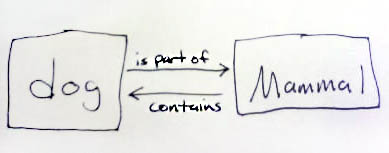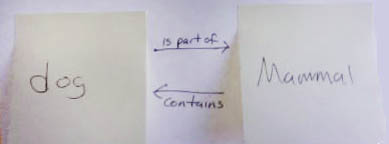How to Develop a Concept Map
Remember, a concept map is a visual representation of what you know about a topic. It helps you to organize, analyze, and communicate your studies and research.
Now that you know what a concept map is and all of its components, let's see how you would create one for yourself.
Steps in Developing a Concept Map
The process of concept mapping involves three major steps:
- Step 1: List key concepts/terms related to the topic
- Step 2: Build up concepts to elaborate key concepts
- Step 3: Identify links between concepts
Step 1: List key concepts related to the topic
List all the concepts related to the topic which you consider essential to understanding the topic. For example, for the topic "cooperative learning," Jose determined the key concepts to be:
- Team Responsibilities
- Individual Responsibilities
- Characteristics
- Roles
- Basic Elements
- Expected Behaviors
Step 2: Build up concepts to elaborate key concepts
After defining the key concepts, you then expand on those concepts. Ask yourself the question:
"What are the important concepts, facts, ideas, terms, etc. that explain the key concept?"
Step 3: Identify links between concepts
It is important to show how or why certain concepts relate to one another. This is called linking – explaining the connection between two separate parts of your concept map.
Making a Concept Map
Concept maps (also known as mind maps) can be made with a pencil and paper,

with post-it notes on a white board (you draw the links) which is great for group brainstorming because you can move the post-it notes around,

or with special computer software. Some of the more popular software includes:
- CMap (online editor)
- Buzan's iMindMap
- Microsoft Visio
A comprehensive list of concept mapping tools is located at https://en.wikipedia.org/wiki/List_of_concept-_and_mind-mapping_software and also at http://www.peterrussell.com/MindMaps/MMSoft.php .


